Travelling in the United Kingdom is something we don’t do quite as much these days as we used to, but when we did take short breaks around the country then more often than not we would stay somewhere near the sea. You can zoom in on the UK on our World Travel Map and see for yourself that we are fond of a seaside resort from the pins around the coastline. We enjoy the faded charm that these places try to keep alive from their origins in the Victorian era, we love some of the tackiness that accompanies attempts to attract visitors, we absolutely love sea air and having views out across the water to finish off an evening at one of these places, and they invariably come with lots of interesting history given their once-popularity or their geographical or strategic locations.
For us, there’s no better type of short break (not a staycation; don’t get me started on that; I will hurt you) than one based by the coastline. Of course, as anyone who knows us will know, I’m not including one place in this generalisation – I won’t mention its name but it does rhyme with Cackpool – but a great example of a place in England we’ve liked enough to visit on more than one occasion is Margate in Kent, and in this post I’m going to take a walk from Cliftonville, east of Margate, to the main town along the seafront, highlighting interesting sights along the way. Interesting to me, anyway.
In 2015 we stayed in Margate for the second year in a row, and as with the previous year we booked into the Walpole Bay Hotel. This is located in Cliftonville, less than two kilometres’ walk from the beach but set on cliffs on the northern coastline so making for a great and not-too-long walk to and from town. It’s a lovely distance, in fact, for clearing the cobwebs in the mind at the start and end of a look around the town. Walpole Bay Hotel is not just a hotel, but a living museum, and we adored it so much on our first visit that we had to stay again. It’s hard to describe it, but if we head back to Margate at any point then it will be where we book again. The first two photos here show the view from our hotel room, looking northwards over the sea and westwards in the direction of Margate.
As you can probably tell, we arrived at our hotel in the early evening, with the sun dropping towards the horizon. We wasted little time, wanting to get out and down into town in search of a pub or two in which to enjoy our first night in Kent on this break. From the hotel we headed straight to the cliff where steps led down to a promenade that snaked along the seafront.
If you’re a fan of tidal pools – somebody’s got to be – then you’re going to be spoilt for choice in Margate as there are two large ones to choose from. One, on the main beach, can be seen further down this post, but there’s another one directly off-shore from the Walpole Bay Hotel called, naturally enough, the Walpole Bay Tidal Pool. Both pools are artificial constructs, trapping seawater that floods in at high tide from flowing back out when the water recedes, but only the one here at Walpole Bay is Grade II-listed (on account of its scale and engineering techniques used) and recommended for swimmers.
In the first part of this look along Margate seafront I’ll skip over the prettiest sight along the lower promenade, that of the Art Deco lift on the cliff edge, and continue on towards the main town, but there’s more on it later in this post. For now you can simply admire the architectural styling.
There’s no getting away from the fact that the landward view along the promenade walk is not going to win any beauty prizes. Even the addition of some street art didn’t do a lot to improve matters but we did enjoy coming across the Flying Toast imagery from Artista which almost seemed to serve as waymarkers along the route.
The next spot of interest along the coastline walk was the site of the Cliftonville Lido, identified by the Lido Sands mosaic tiling reflecting when the outdoor pool area of the complex was filled with sand in the 1970s (more grass than sand when we visited, though). This area would have been fantastic in its heyday (1920s-1930s, but some of the lido elements date from around a hundred year earlier (more on that a little later)), with underground tunnels for baths, bathing machines wheeled down to the sea (four-wheeled, covered, with umbrellas that lowered towards the water to protect the modesty of women entering and exiting the sea), and an amphitheatre complex. On the cliffs nearby was a sloping section in which a short funicular railway would have brought people up and down.
Our walk on this first night in Margate brought us to the harbour and its curving, stone pier, the Harbour Arm. We enjoyed the setting sun and views out across the water before making our way to some pubs for food and drink.
A word here about the pubs we visited on this evening. First up was The Lifeboat, a place we’d hit the year before in Margate and definitely our sort of pub; tiny with loads of real ales and ciders. Highly recommended. We had some pie and mash there and a few drinks before heading off for something else, and that brought us to The Northern Belle. Things that happened there:
- One guy recommended the Turner Contemporary Art Gallery to us once he realised we were from out-of-town because it was hosting a Grayson Perry exhibit. We’d passed the gallery before hitting the harbour but hadn’t checked out what was happening there as it had been closed. We would take his advice the next day.
- A tramp came into the pub and was given a free drink by the barman who then explained to us and another couple of tourists after he’d left that the guy had used to be quite successful before suffering a nervous breakdown and becoming homeless.
- Two guys in the pub started talking about their pasts as bank robbers. They’d served time, and among some anecdotes one of them mentioned that he’d encouraged his wing in prison – including the officers – to watch The Last Night of the Proms and sing along to Jerusalem.
- A posh, older woman came in, sat at the bar, and started talking about the UKIP rally she’d attended and how wonderful leaving the EU would be. Bank robber Steve took an undisguised dislike to her, referred to her as “Mrs Bucket”, and went up in our estimation.
- When Steve discovered we were from Portsmouth he started talking about his youth as a football hooligan with Spurs’ Yid Army. He told us the toughest fight he’d had was with Cardiff but that Portsmouth’s 6:57 Crew were a close second. He was also proud that he’d been seen on Match of the Day getting punched by Pat Jennings.
On our first visit to Margate in 2014 we’d used the town as a base for exploring Kent during the day and only really seen the town at night. For this visit, however, we wanted to see what we could find to entertain us on a full day there so the second day saw us repeat much of the previous evening’s walk ahead of a look for something to do. We tend to travel outside typical tourism seasons so we knew that not everything would be open; as a result we didn’t have any firm plans for things to do in Margate but we figured we’d find enough to occupy us.
After breakfast in the Walpole Bay Hotel we made our to the cliff top for a look out across the sea and along the seafront.
Before heading west towards Margate as we had done the night before we decided to see what an eastward walk would uncover. This very quickly brought us to Palm Bay, a decent option for a sandy beach likely to be considerably quieter than the Main Sands of the town but with very little else there other than a café. Also, while it was clearly a bay and worthy of the name there were no palms that we could see. That’s false advertising, that is.
We headed back along the lower promenade and past the Walpole Bay tidal pool.
The Cliff Lift is a Grade II-Listed Building on account of its rarity, intactness, and architectural interest. The overriding style of the 1934-built structure is Art Deco, of course, but there are Egyptian influences in the tapering design, too. This was one of two mechanical means to ascend and descend the cliffs along the coast, with the other being the funicular nearer to the lido.
The cliffs are chalk, which you’ll probably already know is a form of limestone and pretty soft on the rock spectrum. If Bryan Adams was a mineral then he’d be chalk. Being soft and white and easy in which to make carvings and use the residue to leave markings there were lots of examples of exactly that having been done over the years. I’m referring to the cliffs here but it probably equally applies to Bryan Adams, to be fair.
It didn’t take us long to reach the Harbour Arm again. This curving, stone pier was constructed between 1812 and 1815. The lighthouse that marks its end point is a later reconstruction of the original, this one being erected in 1955. There were some small establishments along its length – cafés, a bar, some galleries – but we didn’t stop to see any of them.
In addition to the lighthouse at the end of the pier, there was a sculpture that wouldn’t look out of place as some kind of adversary for Doctor Who to face off against. This shell lady is Mrs Booth and was made by Ann Carrington (read more about the sculpture and the other shell ladies here: Ann Carrington – Mrs Booth). Mrs Booth is made from bronze, and like other sculptures in this series was named after a famous resident of the area. The real Mrs Booth, Sophia Caroline, was a landlady with whom J.M.W. Turner lived in his later life as “Mr Booth”.
The location of the Margate property in which Turner and Mrs Booth stayed is now the Turner Contemporary Art Gallery and it was there that we next visited, following the advice of one of the previous evening’s pub patrons; that was our first experience of seeing some of Grayson Perry’s pottery and tapestry pieces up close and was a fabulous experience. Look at us, embracing all the arty stuff!
After our intake of modern art we passed by something considerably older on our way to something rather bizarre.
The older thing was the Tudor House. Considered to be one of the oldest of its kind in Kent, this former yeoman farmer’s house was built in 1525 and is timber-framed, two storeys high, and sat on a foundation of a flint plinth. It was clearly a house for someone of high status, sporting two chimneys and glazed windows. The house – which by the late nineteenth century had been split into three cottages and was in a general state of decline – was scheduled for demolition in the 1930s as part of a local scheme to clear the slum areas of Margate. Luckily, a builder recognised some of the historic features in the building and it was saved from destruction, instead undergoing renovation work using traditional Tudor methods and materials to restore it to its state today.
The Tudor House is Grade I-listed and looked gorgeous from the outside, but it didn’t appear to be open to visitors on the day we passed by.
We next took a look at the bizarre thing, and it was something we’d remembered seeing the signs for on the year before’s trip to Margate, but which, with us only really seeing the town in the evenings, we’d not had a chance to explore. This was the Shell Grotto, a quite enchanting, underground set of tunnels with practically every surface covered with mosaic patterns formed from shells. How many shells? Oh, over four and a half million shells. Whilst the majority of the different types of shells used can be found locally, especially along the bays we’d walked by, the flat winkle shells which make up the largest surface area cannot. It is speculated that they came from Southampton, but that’s not the end of the speculation.
That the grotto was discovered in 1835 is not disputed, but the purpose of the grotto and its age, which would point to the builders, is. Hypotheses have included:
- A Phoenician trading post, since the design bears some similarities to others found in Europe.
- A mystical place connected to the Knights Templar.
- A mystical place connected to Freemasons.
- A mystical place connected to Mithras.
- An astronomical temple to the sun.
- A rich man’s folly.
Gas lighting initially installed ended up coating the shells with carbon deposits that make dating the place nearly impossible, and the designs of the various motifs is unique, not really pointing to any specific culture. To us, though, when walking around and being genuinely impressed with the effort and artistry involved, the lattermost suggestion of the Shell Grotto being a folly felt most likely. Margate doesn’t seem to have any Roman or Phoenician history, or any other historical culture of noteworthiness for that matter. As a town its origins seem to spring up in the early Middle Ages but it doesn’t seem to hold any significance to religious groups either. That the grotto was “found” in 1835; that it has similarities to other grottoes from a century or so earlier (one was built at Goodwood in the 1740s); that the designs seem to include Indian, Egyptian, Greek, and Roman motifs; that getting winkles from Southampton to Margate in sufficient quantities prior to significant coastal trading would have been quite the task; that 1835 coincides with the early construction of the nearby Cliftonville Lido when it might be supposed an awful lot of shells were being dug up: all these point to a bit of “Why the hell not?” attitude from someone with a bit of money.
Or aliens.
We may never know, but the Shell Grotto is a lovely bit of mystery to have a nose around.
We emerged back into daylight and headed off to grab something to eat in town. On the way I snapped some more examples of street art in Margate. Certainly not the highest quality artwork we’ve ever seen, and enough low-quality tagging to point to young, local boredom and general dissatisfaction rather than inspired designs. Of course, Margate is part of Thanet and close to where Oswald Mosley-lite, Nigel Farage, was prominent at around this time, so it’s easy to conclude that any proximity to that self-serving, semi-sentient, cum-stain in a human skin formed from the sewn-together carcasses of blobfish might suck the spirit out of creative minds.
A break for something to eat and drink, then we continued around the bay and towards the sandy beach of Margate, known as the Main Sands.
We passed the Margate Clock Tower that was built to commemorate Queen Victoria‘s Golden Jubilee of 1887. The tower was completed in 1889 because late delivery on construction projects is what we do in this country. It’s our thing. We’ve seen more attractive clock towers around the country built at around the same time for the same reason (and we’ve seen some truly ugly ones too) but what makes Margate’s structure worth a look at, especially at one o’clock in the afternoon, is that it has a working time ball that rises and drops to signal the time. It’s one of very few working examples in the world (it had been broken but was repaired in 2014) as the purpose of a time ball – to allow vessels at sea to synchronise clocks with something visible on land – became obsolete with the invention of radio.
When people think of Margate they perhaps most likely think of Chas and Dave singing or of the Jolly Boy’s Outing episode of Only Fools and Horses, but they might also think about Dreamland. Dreamland is the site of an amusement park, hosting rides since the 1880s, although the name Dreamland itself wasn’t used until 1920 when a wooden rollercoaster on a scenic railway became the big attraction. That rollercoaster would aid in the park’s salvation as the area went into decline in the early 2000s and plans were drawn up to close it down, sell everything off, and redevelop it all; the Grade II-listed status of the railway hampered that and local objections further delayed things (there was an arson attack on the wooden railway to conveniently remove that obstruction which fortunately failed too) until the local council purchased the land and committed to bringing the attraction back.
The history of Dreamland includes the murder of a sex worker by a circus strongman and the death of its founder at home, killed by a hatchet wielded by an employee who then committed suicide on a railway line, so lots to dig into there, and its many attractions are obviously the main draw for most people, but we satisfied ourselves with admiring the external view only of the Dreamland cinema building. Built in 1935 and so obviously Art Deco that it hurts. It’s beautiful.
From one example of beautiful architecture to another, as very close to Dreamland, and with views directly at it from one side of the building, was Arlington House. You can instantly see this is modernist and brutal, and those wave patterns are just fabulous. They were incorporated to give the residents angled views in order to catch the sun when it shone. You can read more from the architect talking about that particular facet of the overall design and the general inspiration for the building in this excellent interview here: Russell Diplock, Architect behind Arlington House. If you were to read the Wikipedia entry for Arlington House then you’d see mention of a rooftop swimming pool with glass bottom – information gleaned from a 2018 newspaper article – but that’s the only source for that information, it’s not supported by any photographs or plans, it’s not mentioned in that interview or visible in any newspaper articles or adverts for the accommodation, and when I mentioned it on social media it was immediately dismissed as false by a local resident with interest in the building and area. In summary: we can say with high levels of certainty that no, Arlington House never had a swimming pool on its roof. Don’t believe everything you read on Wikipedia.
A couple more sights interrupted our short walk to the sands of the beach and which offer some momentary interest.
The Standing Stones are the result of a 1997 art project when writer Suzannah Dunn worked with children to explore ideas and thoughts about Margate, people, and feelings in words, stories, and poetry. From all the words written down and spoken by the children a poem was created and carved into stone by sculptor Paul Wehrle.
The Lifeboat Memorial is dedicated to the nine men lost in 1897 when the lifeboat Friend To All Nations capsized. The lifeboats were operated by local boatmen as a co-operative measure; each paid a share in to maintain the vessels, and each received a share of salvage when saving vessels and people in distress.
Margate Beach or Margate Sands or Main Sands was where we were heading. With us travelling out of season it was quiet and perhaps even a little foreboding under the light cloud cover, but on a bright, warm, sunny, summer day you can see why this wide beach of golden sands has been a popular destination for day-trippers for as long as it has. Margate ticks all the boxes for a great, traditional, British seaside resort.
Margate’s second tidal pool is on the main beach, although it’s categorised as a boating pond these days (perhaps because it’s less easy to keep clean) and swimming is not advised. It was nice enough to walk along its raised concrete edge during our stay and to take photos across the flat beach and seafront areas towards the town and harbour.
That brings this walk along Margate seafront to an end as we decided from looking at a map not to continue further around the coast but to head back inland a little way and start on the all-important job of pub-crawling and working out where we were going to eat that evening.
I don’t know that Margate has enough to keep people like us interested in the town itself for more than a single day at a time but then we don’t do amusement parks and we’re not the sort to lounge about on beaches. Families with young children could do a lot worse than here, even if using it as a base for some of the time to explore other parts of Kent. Prior to the explosion in package holidays, Margate was a very popular UK resort and for fairly obvious reasons, but that steady income from people staying for a week or so and being supplemented by day-trippers from London or thereabouts gave way to a just a relative trickle from the latter once it became easier to travel farther afield and to warmer parts with better value for money. Margate’s no different from any other place in the country in that respect, of course, and it suffers that same evidence of declining fortunes everywhere you look, but we like it a lot as a place. We’ve been to Margate more than once and we’ll go again, I’m certain.


















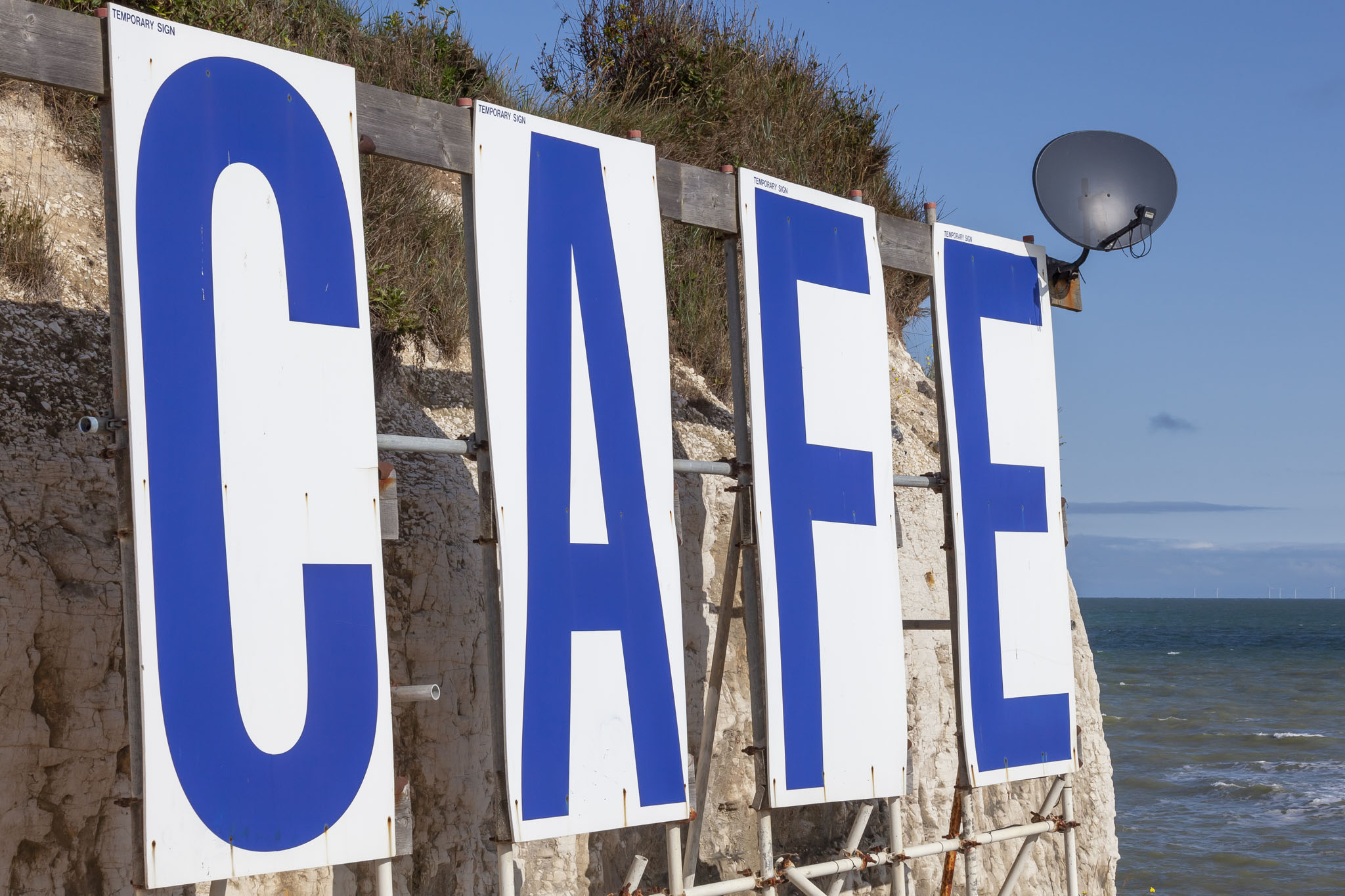




























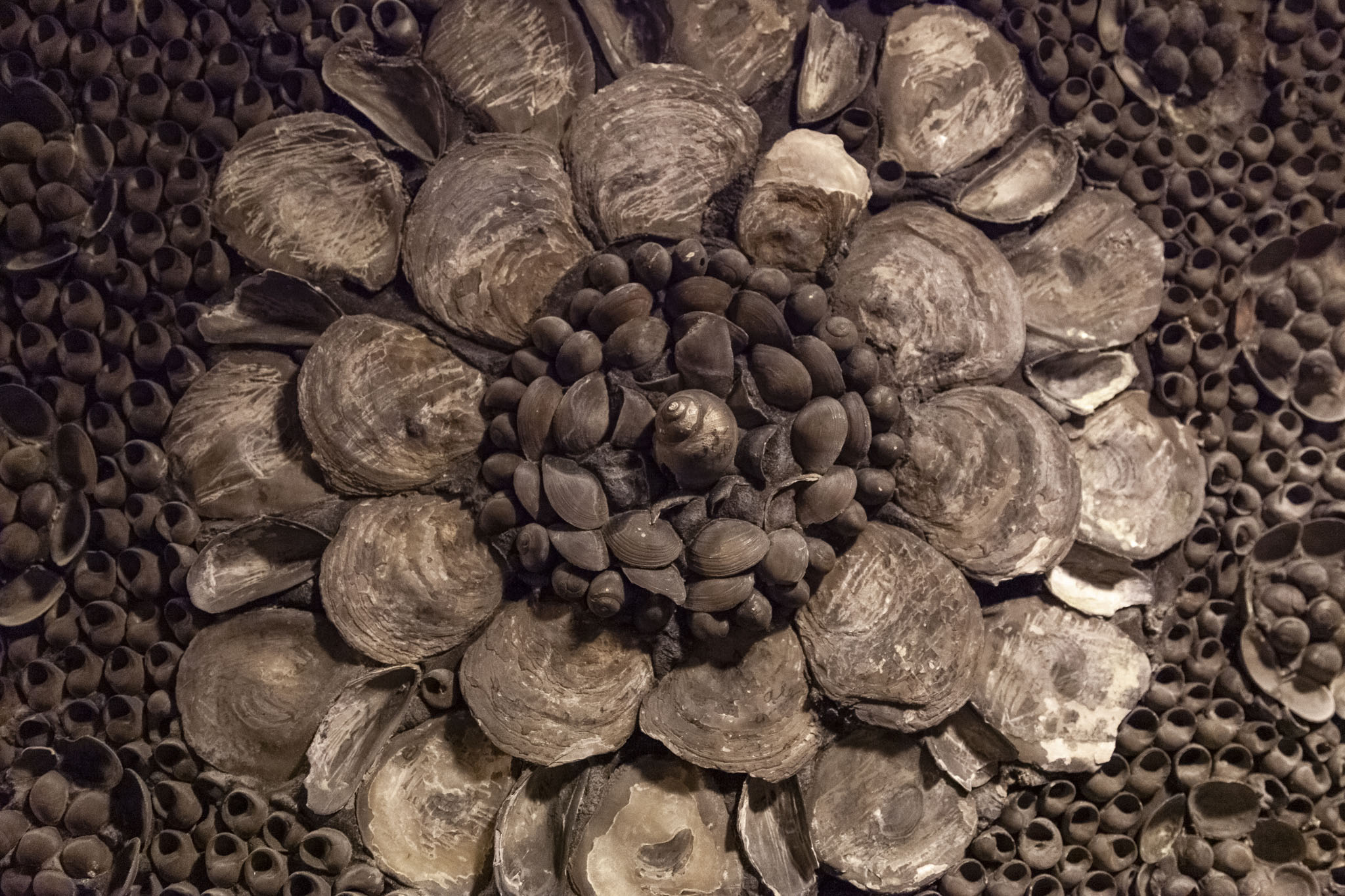
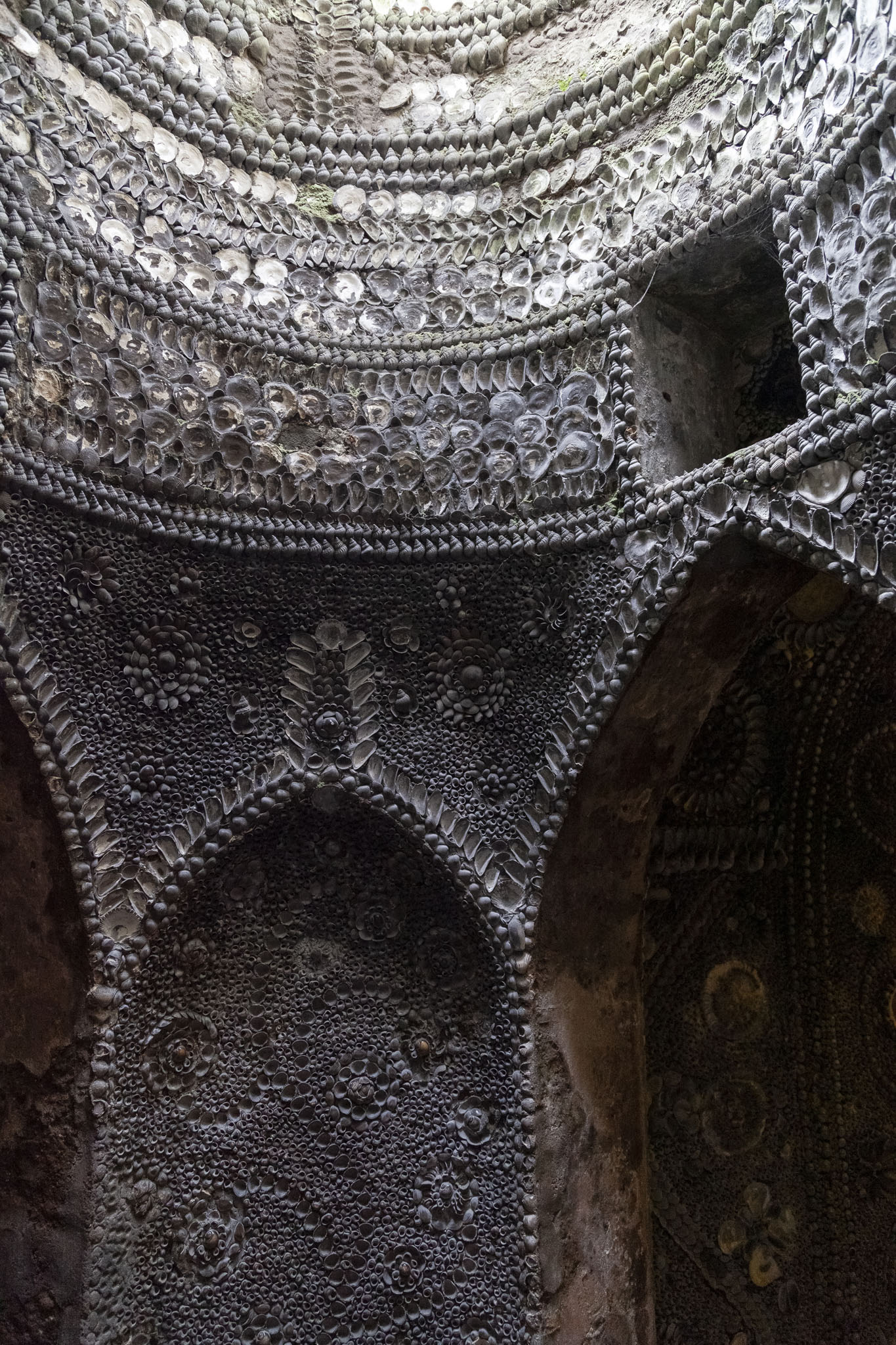






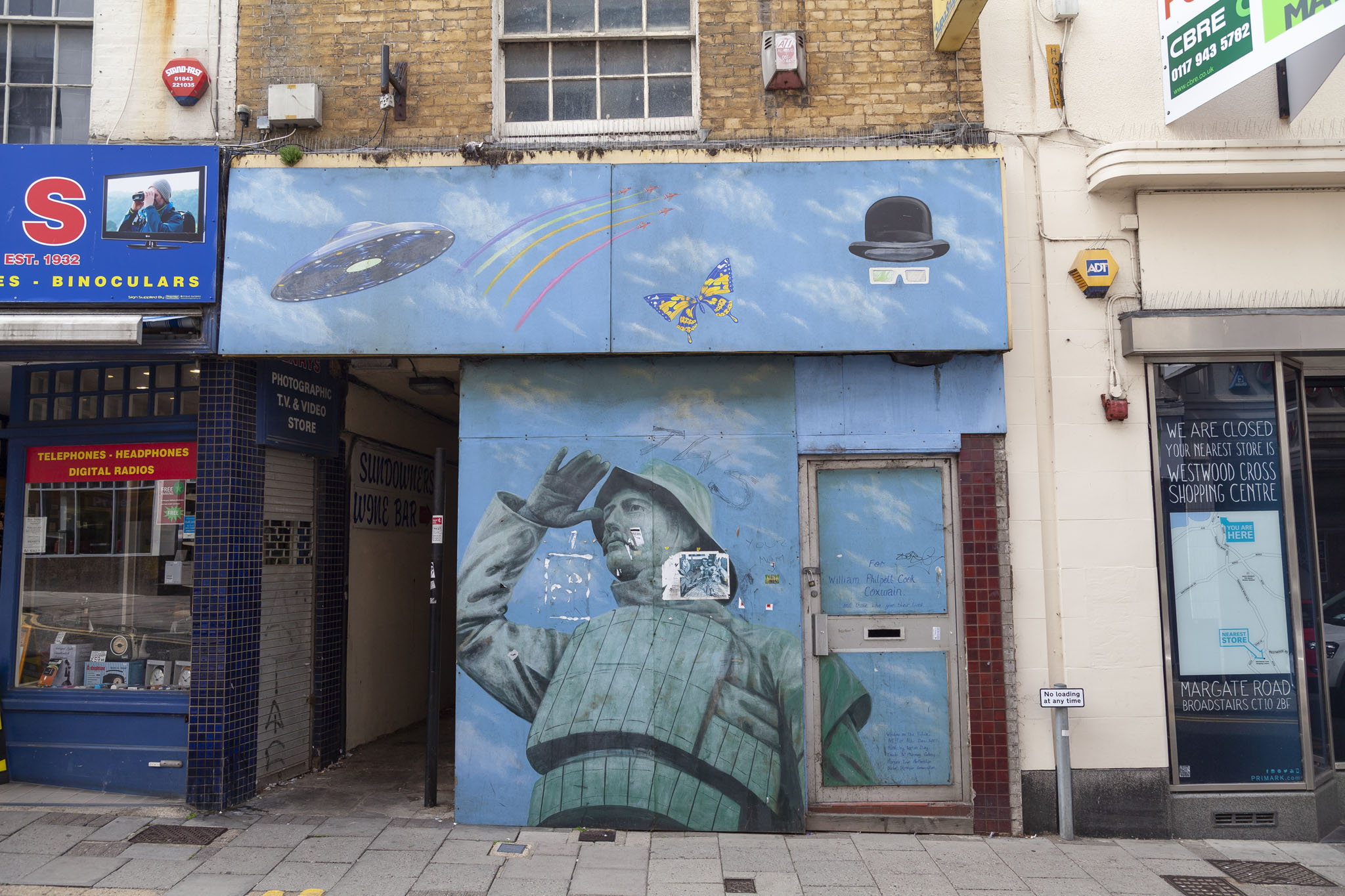




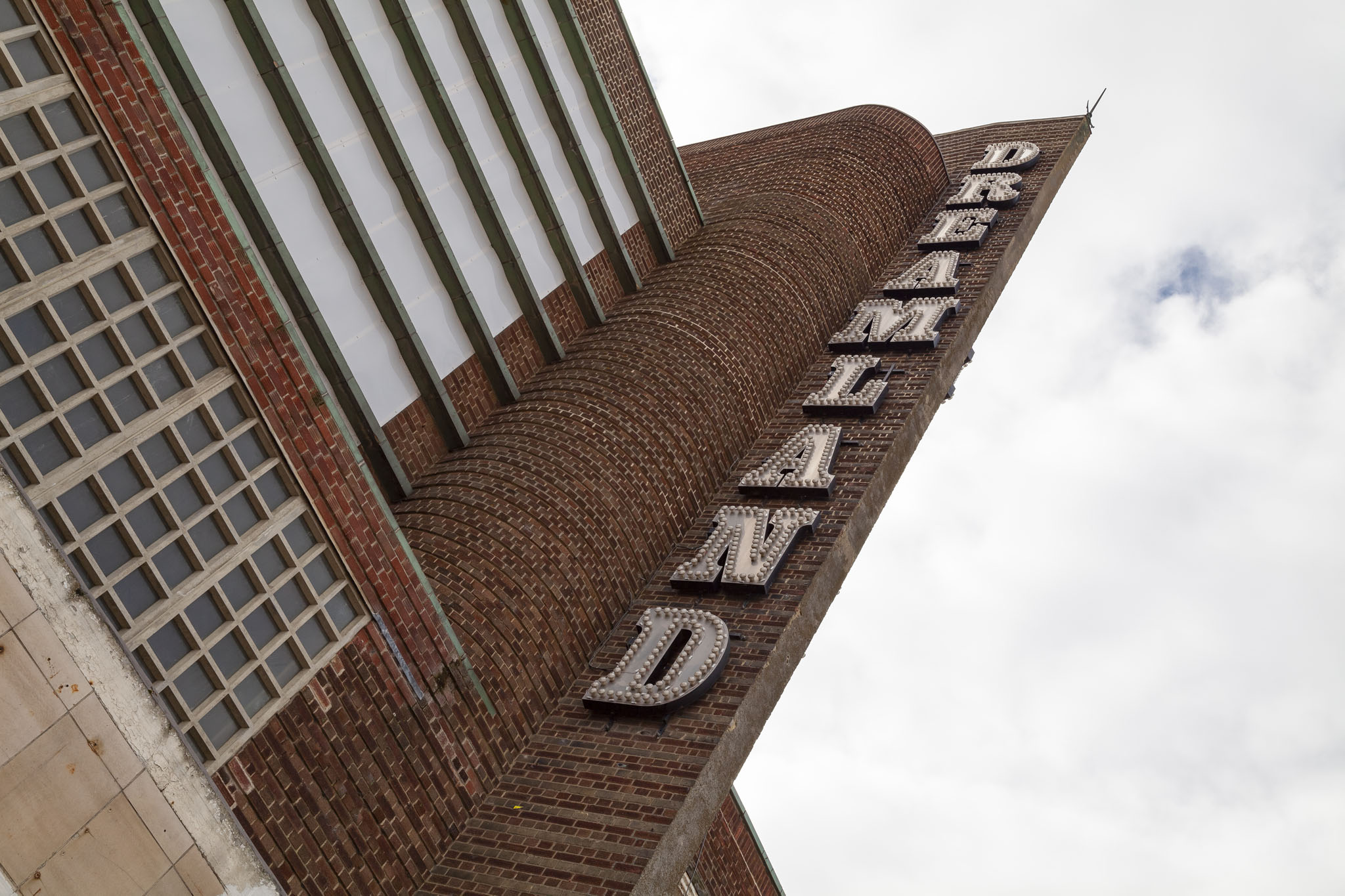
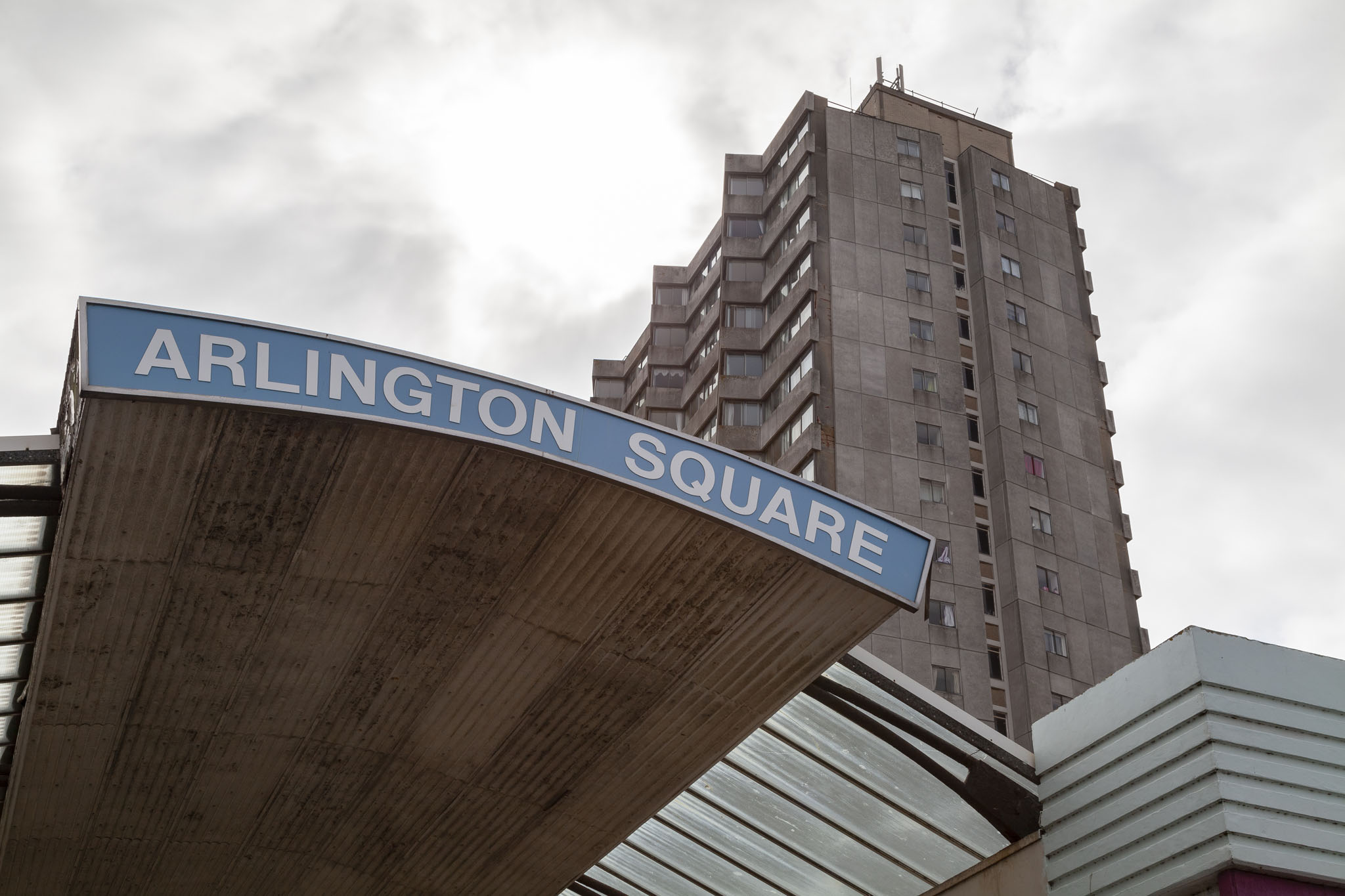











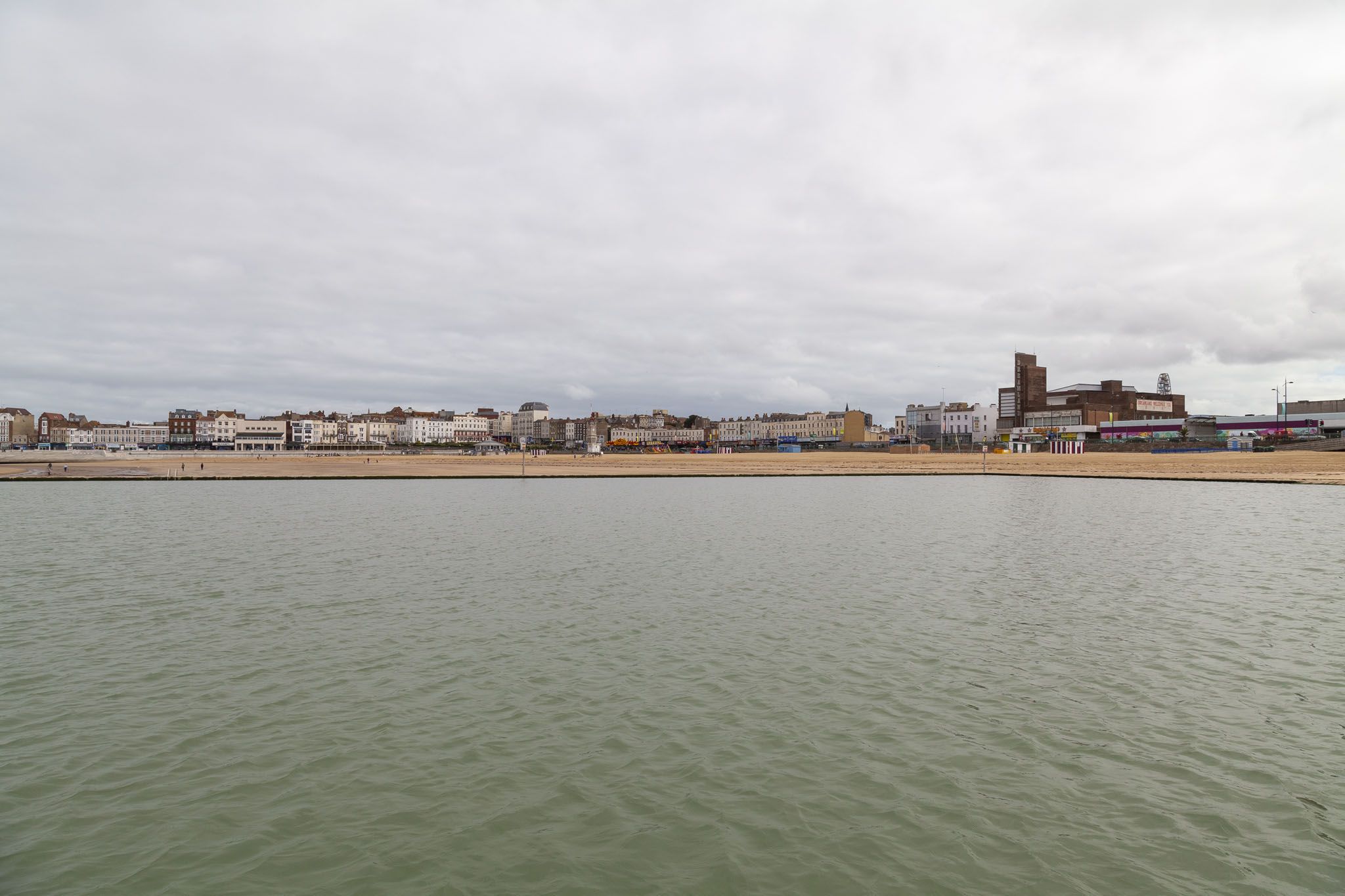










I’m into open water swimming, so Walpole Bay Tidal Pool would be fun. Old friend of mine from Germany lives in Margate, now I might make an effort to visit her there, not in London. PC bank robbers and un-PC Ms Bucket (‘boo-kay’)… Margate’s got it all.
What am interesting place! The people you wrote about in the pub are quite the characters! Plus, the shell statue and shell grotto are interesting as well 🙂
Thanks for sharing and lots of photos! Feels like I just had a visit (virtual) to Margate 🙂